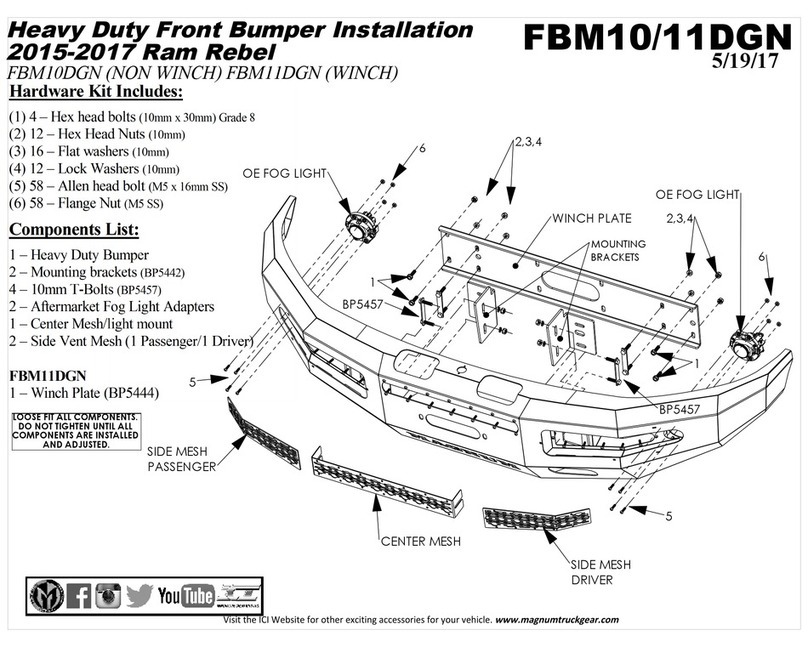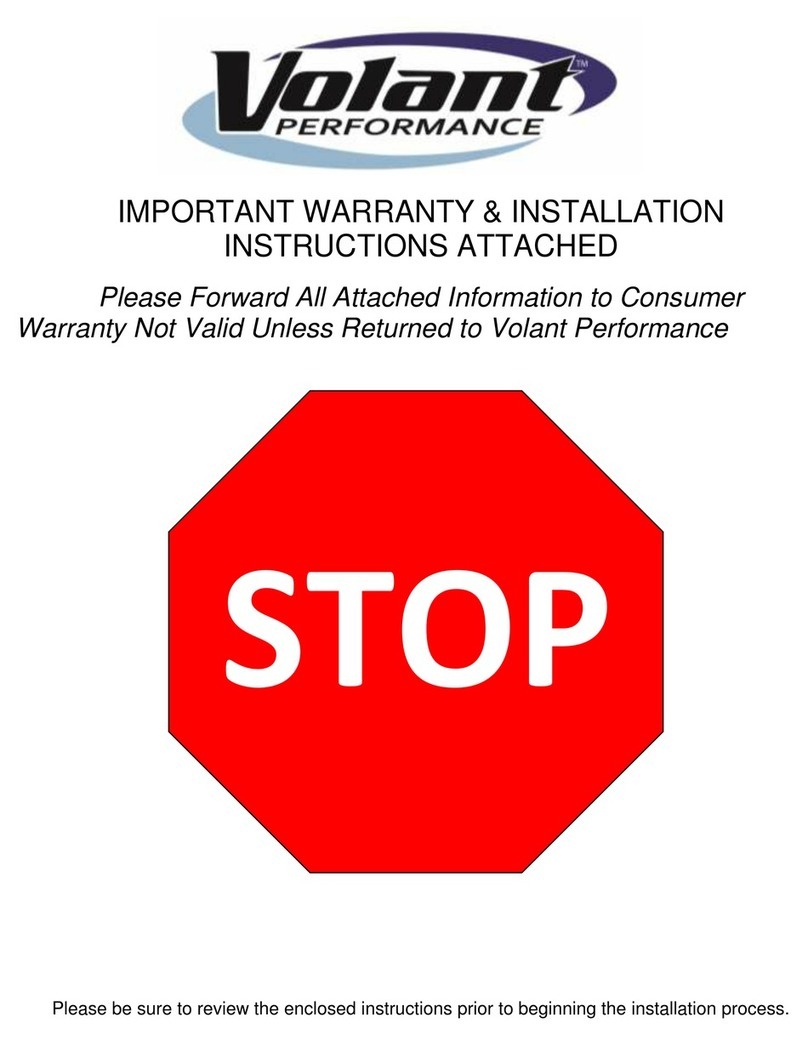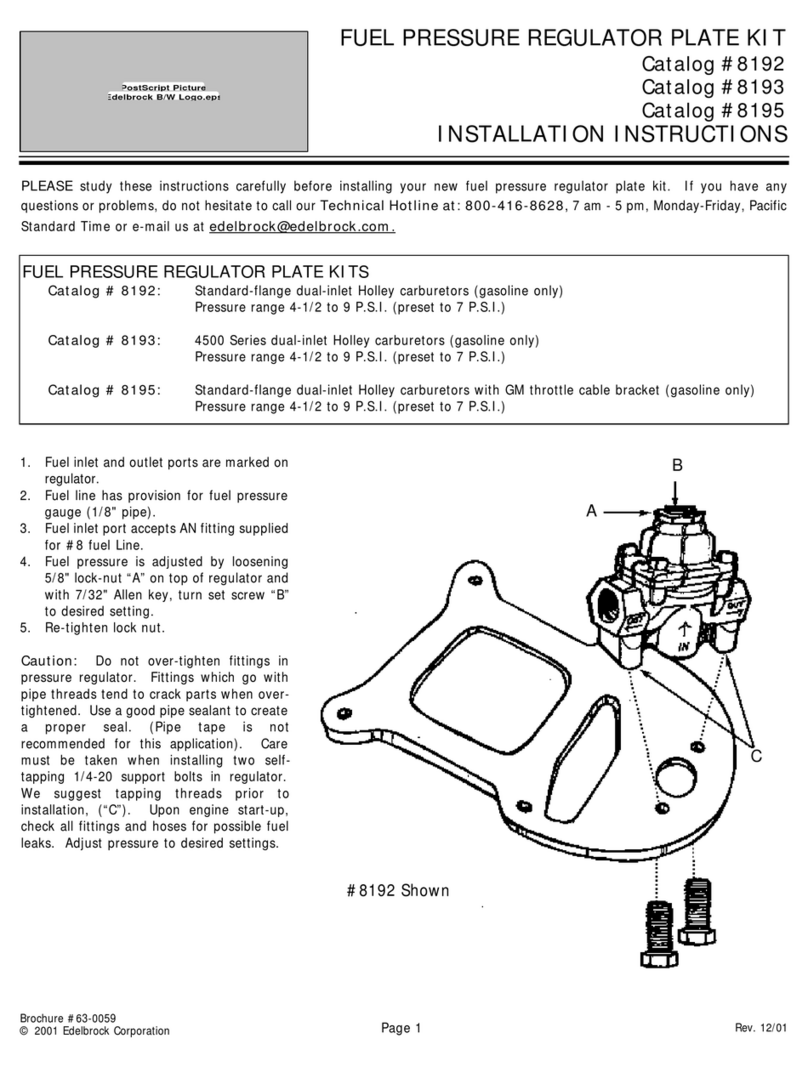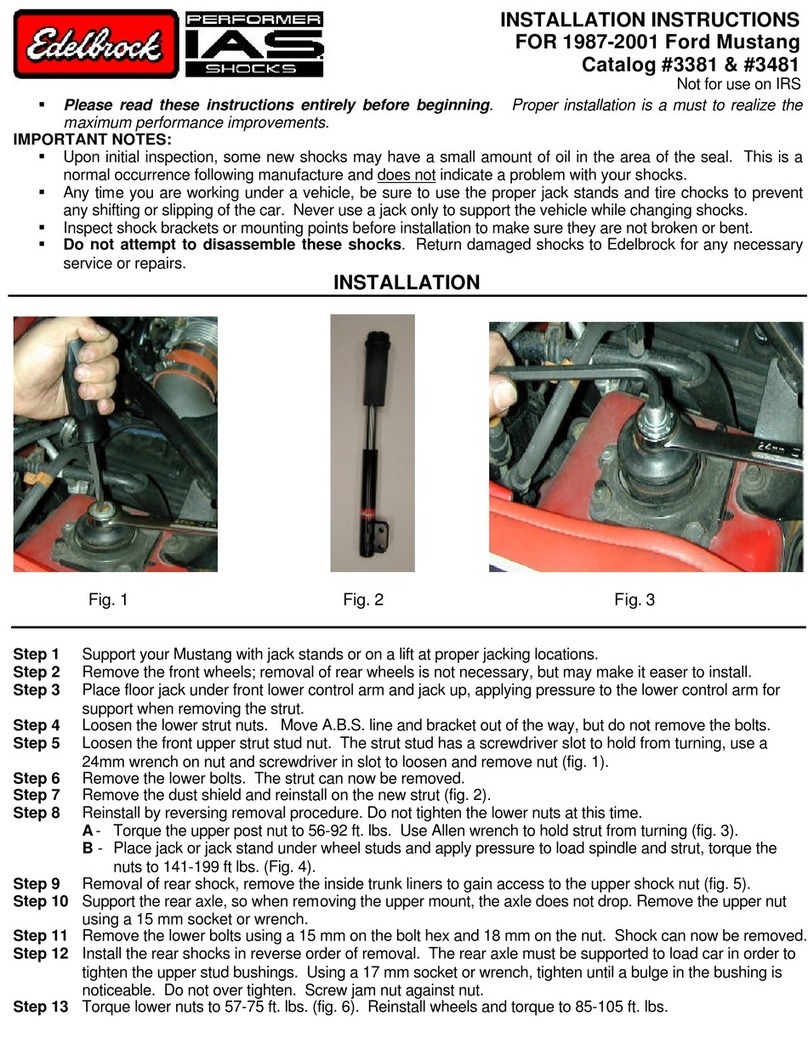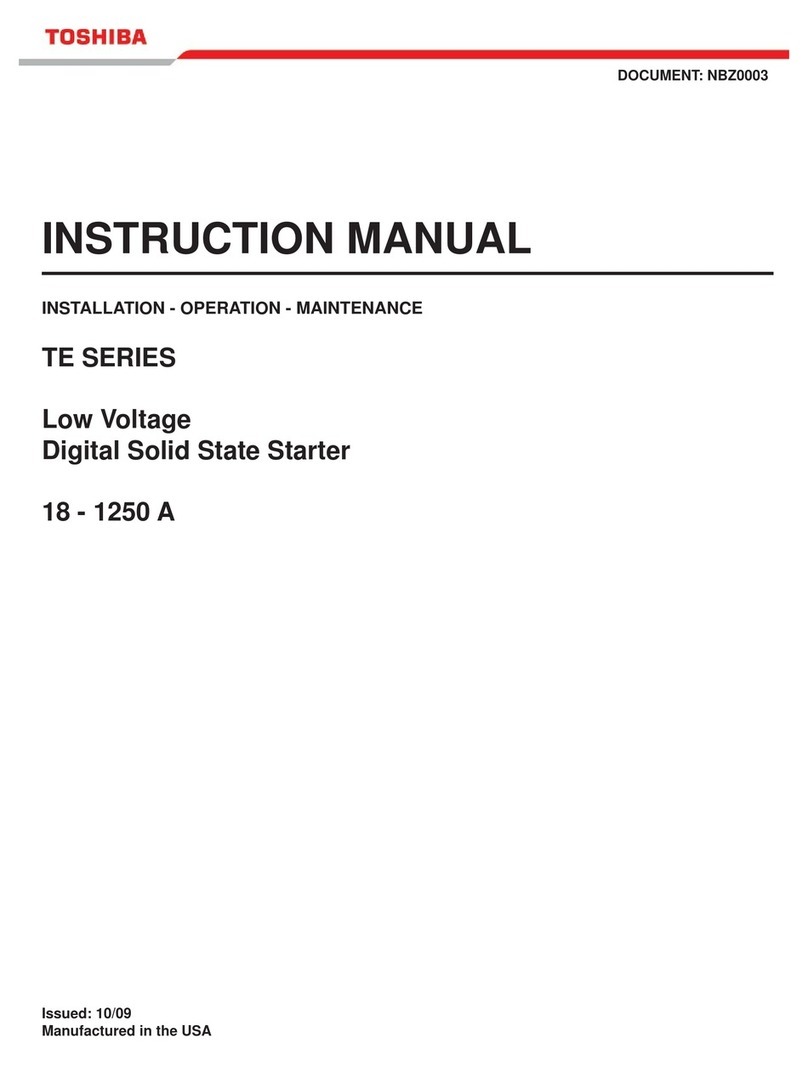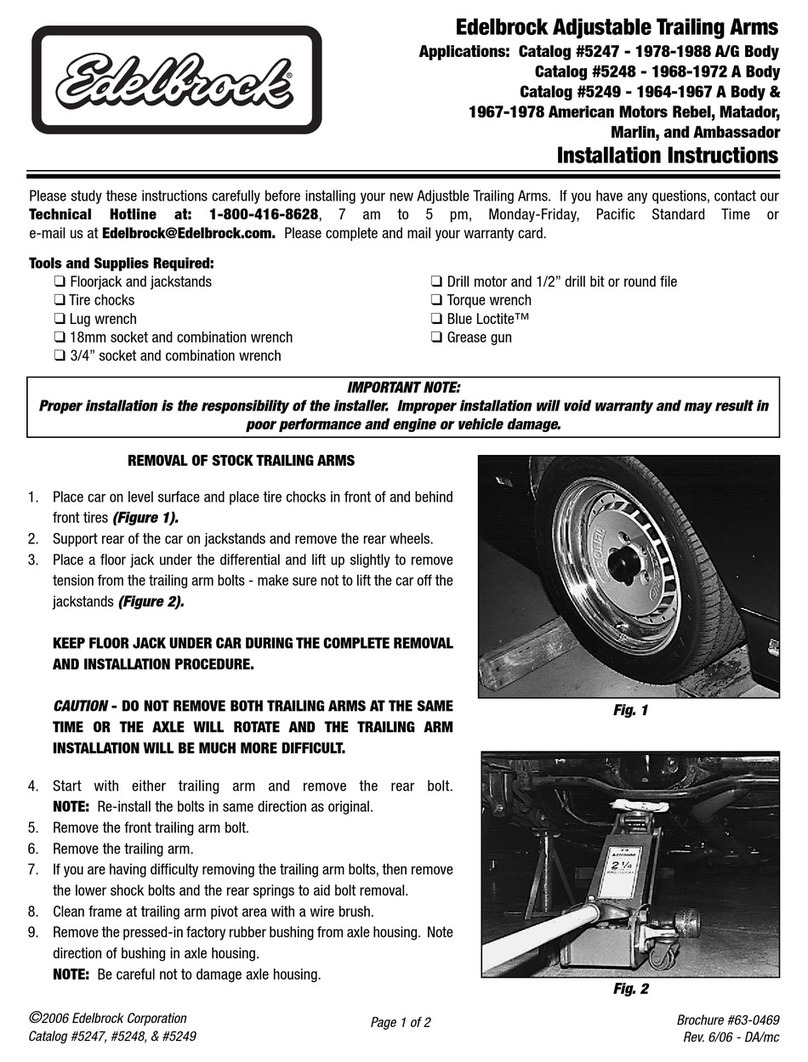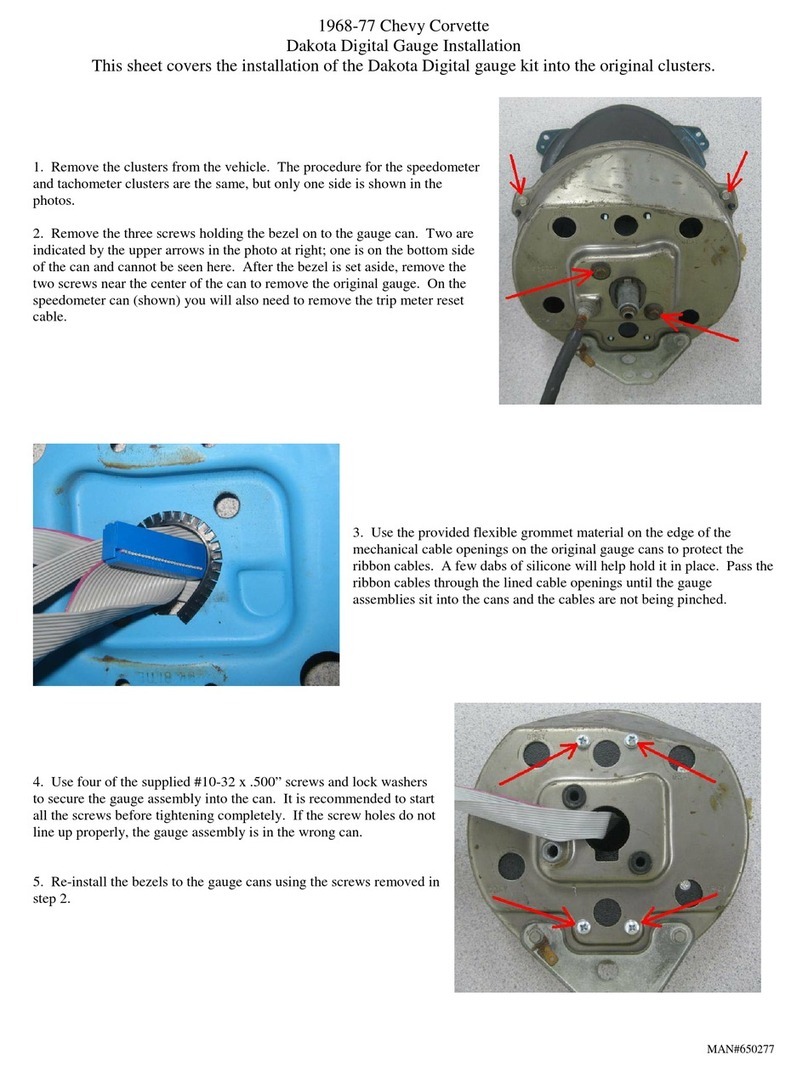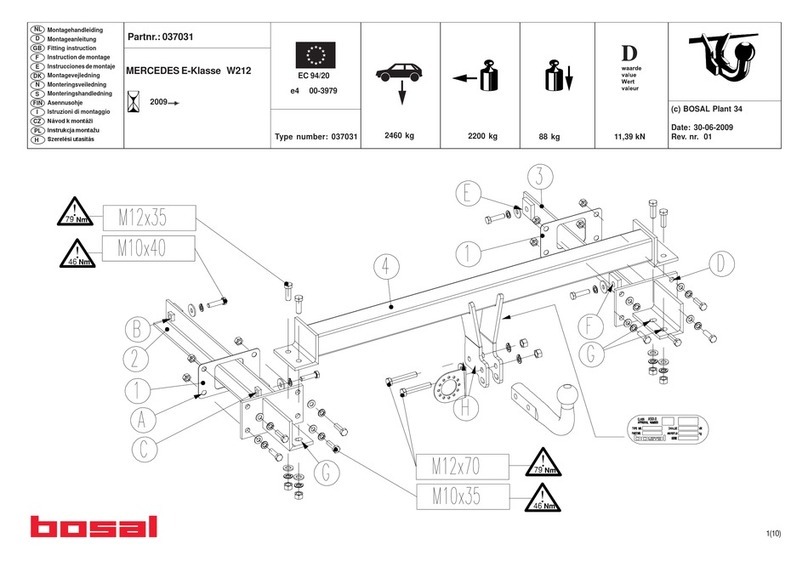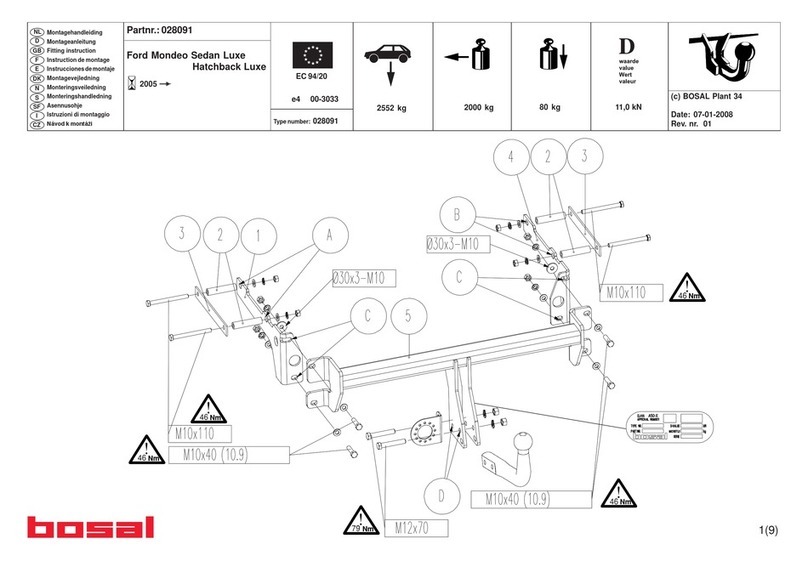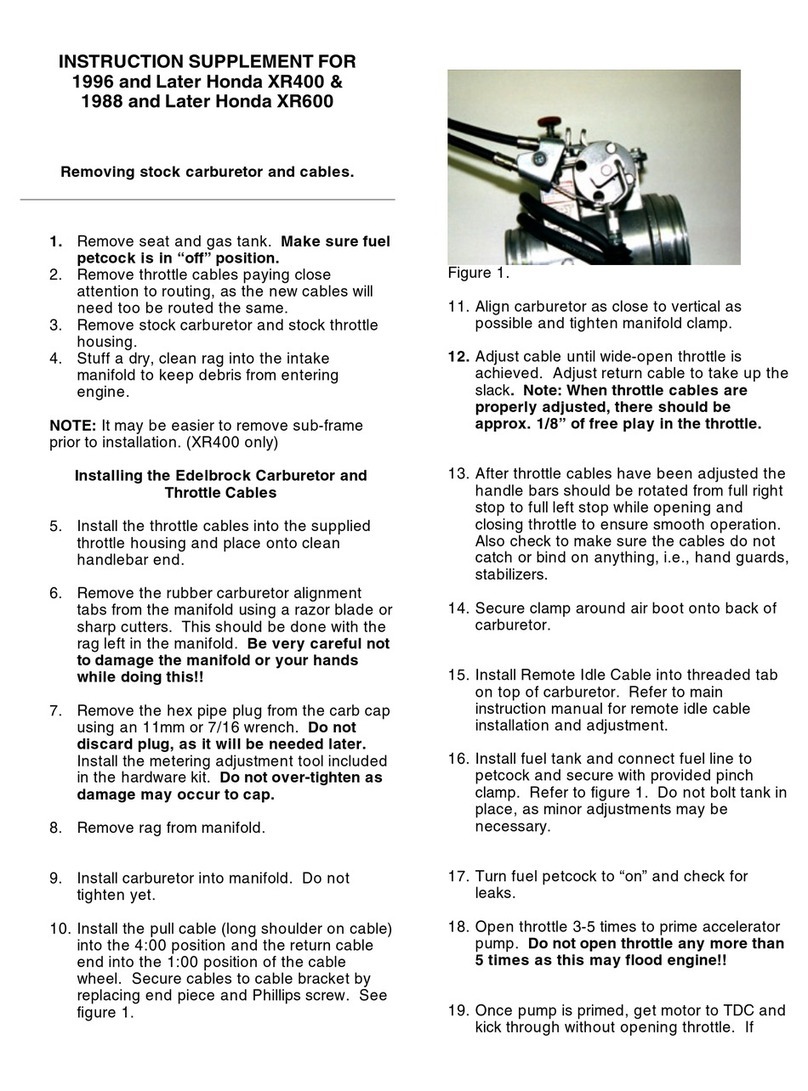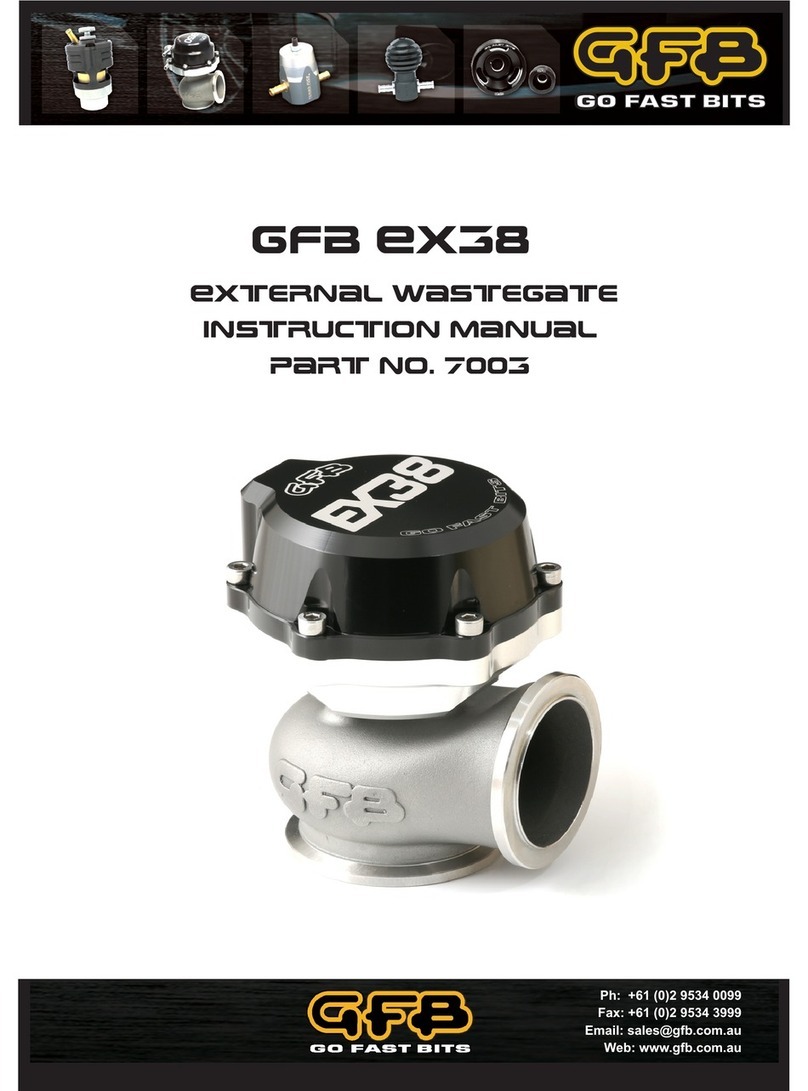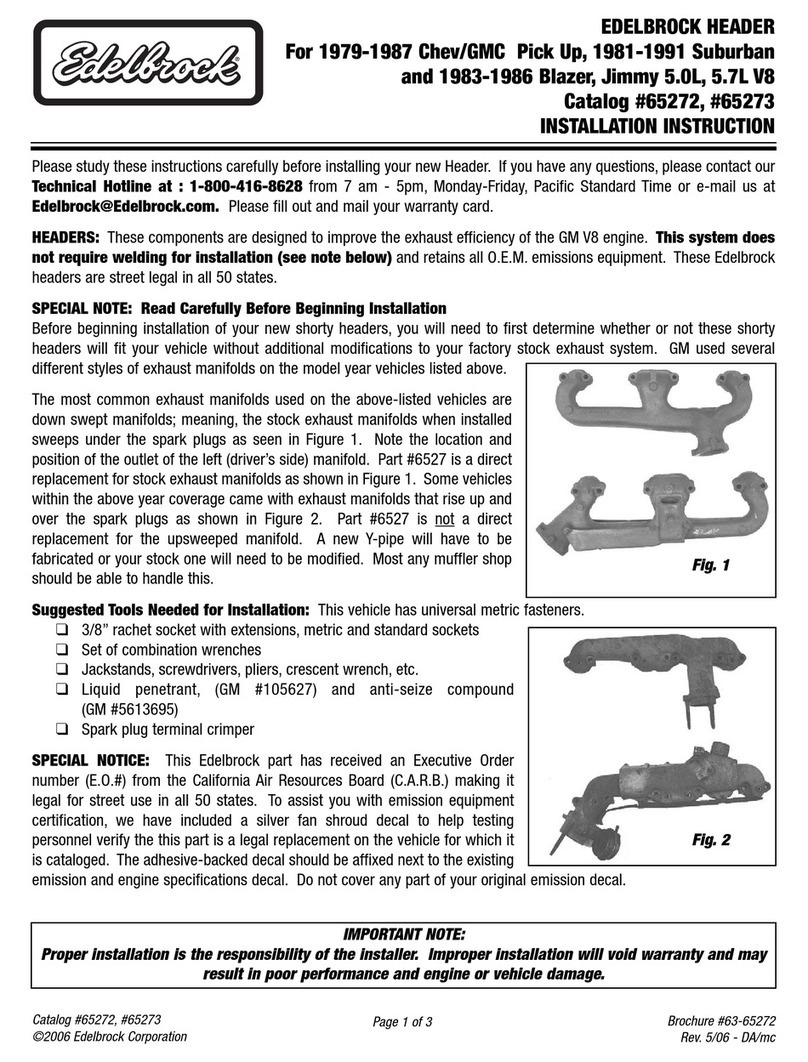
TD - Series
- 2 -
TD Series Digital Solid State Soft Starter 48 - 1250A
1.2 Specifications and Performance Features Cont’d
Note 1: Enabled via programming
Two Stage Electronic
Overload Curves
Starting: Programmable for Class 5 through 30
Run: Programmable for Class 5 through 30 when "At-Speed"
is detected.
Overload Reset (Note 1) Manual (default) or automatic
Retentive Thermal Memory
Overload circuit retains thermal condition of the motor
regardless of control power status. Unit uses real time clock
to adjust for off time.
Dynamic Reset Capacity
Overload will not reset until thermal capacity available in the
motor is enough for a successful restart. Starter learns and
retains this information by monitoring previous successful
starts.
Phase Current Imbalance
Protection (Note1)
Imbalance Trip Level: 5 - 30% current
between any two phases
Imbalance Trip Delay: 1 -20 seconds
OverCurrent
(Electronic Shear Pin)
Protection (Note 1)
Trip Level: 50 - 300% of motor FLA
Trip Delay: 1 - 20 seconds
Load Loss Trip Protection
(Note 1)
Under Current Trip Level: 10 -90 % of motor FLA
Under Current Trip Delay: 1 - 60 seconds
Coast Down (Back Spin)
Lockout Timer (Note 1) Coast Down Time Range: 1 - 60 minutes
Starts-per-hour Lockout Timer
(Note 1)
Range: 1 - 10 successful starts per hour
Time between starts: 1 - 60 minutes between start attempts
Type / Rating Form C (SPST), Rated 5 amps
240 VAC max, (1200 VA)
Run Indication Start/Stop or Start/End of Decel
At Speed Indication At Speed/Stop or At Speed/End of Decel
Acceleration Adjustments
Programmable Ramp Types: Voltage or Current Ramp
(VR or CR)
Starting Torque: 0 - 100% of line voltage (VR)
or 0 - 600% of motor FLA (CR)
Ramp Time: 1 to 120 seconds
Current Limit: 200 - 600% (VR or CR)
Dual Ramp Settings
4 Options: VR1+VR2; VR1+CR2; CR1+CR2; CR1+VR2
Dual Ramp Control: Ramp #1 = Default,
Ramp = #2 selectable via dry contact input
Deceleration Adjustments
Begin Decel Level: 0 - 100% of line voltage
Stop Level: 0 to 1% less than Begin Decel Level
Decel Time: 1 - 60 seconds
Programmable to decel or coast to stop upon overload trip
Jog Settings
Jog function selected via
dry contact closure input)
Voltage Jog: 5 - 100%
Time of Voltage Jog: 1 - 20 seconds
Current Jog: 100 - 500%
Kick Start Settings
(Note 1)
Kick Voltage: 10 - 100%
Kick Time: 0.1 - 2 seconds
Fault Indications
Shorted SCR, Phase Loss, Shunt Trip, Phase Imbalance
Trip, Overload, Overtemp, Overcurrent, Short Circuit, Load
Loss, or Any Trip
Lockout Indicator Coast Down Time, Starts Per Hour,
Time Between Starts, and Any Lockout
Programmable Outputs
Advanced Motor Protection
